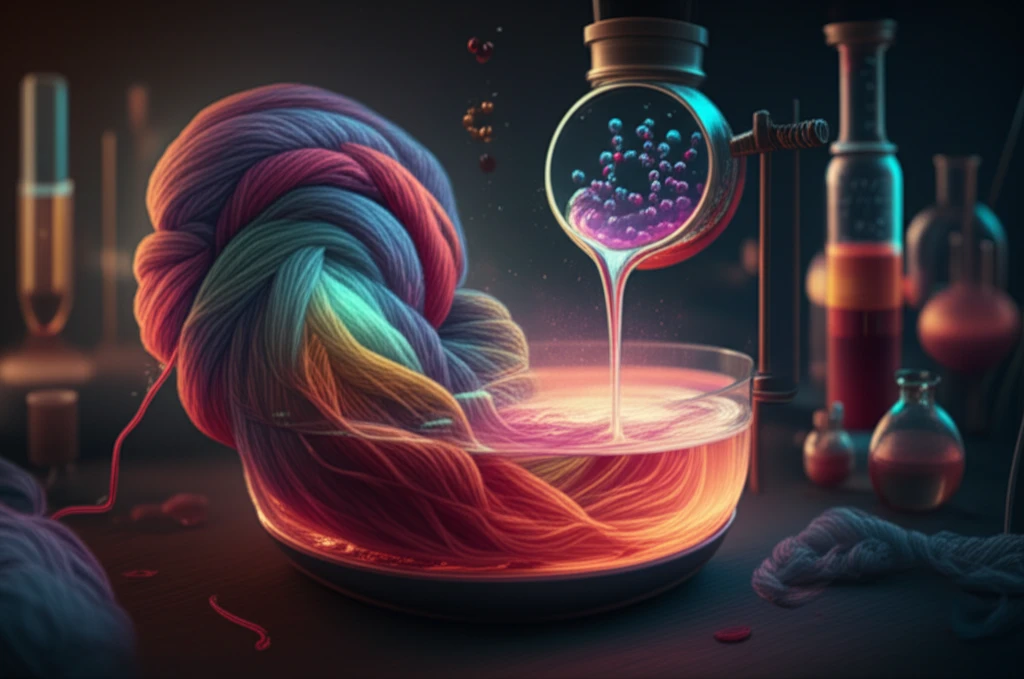
Revolutionizing Wool Dyeing: How Chitosan Can Create Eco-Friendly, Vibrant Colors
"Discover how a novel bio-mordant derived from chitosan and cyanuric chloride enhances cochineal dye absorption, offering a sustainable alternative to traditional dyeing methods."
The textile industry has long grappled with the environmental consequences of synthetic dyes. As awareness grows, consumers and manufacturers alike are seeking sustainable alternatives. Natural dyes, derived from plants and insects, offer a promising solution, yet they often lack the vibrancy and durability of their synthetic counterparts.
Cochineal, a natural dye extracted from insects, has been used for centuries to color textiles. However, its high cost and the need for metal mordants—chemicals that help the dye bind to the fabric—present significant challenges. Traditional metal mordants like chromium and copper contribute to environmental pollution, undermining the very sustainability that natural dyes aim to achieve.
Now, innovative research offers a breakthrough: a novel bio-mordant made from chitosan and cyanuric chloride. This eco-friendly alternative enhances the absorption of cochineal dye on wool yarns, creating vibrant, long-lasting colors while minimizing environmental impact. Let’s explore how this technology is revolutionizing wool dyeing, making it greener and more efficient.
What is Chitosan-Cyanuric Chloride Hybrid and How Does It Enhance Dye Absorption?

Chitosan is a natural polymer derived from chitin, found in the shells of crustaceans like crabs and shrimp. Abundant and biodegradable, chitosan has gained attention for its diverse applications, including textile modification. By combining chitosan with cyanuric chloride, researchers have created a hybrid molecule with enhanced ability to bind to wool fibers.
- Increased Affinity: Ch-Cy increases the cationic properties of wool, attracting the anionic components of cochineal dye.
- Enhanced Bonding: The hybrid forms strong chemical bonds with wool fibers, improving dye uptake and color fastness.
- Reduced Dyeing Time and Temperature: Ch-Cy pretreatment allows for efficient dyeing at lower temperatures and shorter times, saving energy and costs.
- Antibacterial Properties: The treatment imparts durable antibacterial properties to the wool, enhancing its value and longevity.
Embracing a Sustainable Future with Innovative Dyeing Techniques
The development of chitosan-cyanuric chloride hybrid as a bio-mordant marks a significant step forward in sustainable textile production. By enhancing the use of natural dyes like cochineal, this innovation reduces the reliance on harmful chemicals and minimizes environmental impact. As consumers increasingly demand eco-friendly options, technologies like Ch-Cy will play a crucial role in shaping a greener, more sustainable future for the textile industry.
